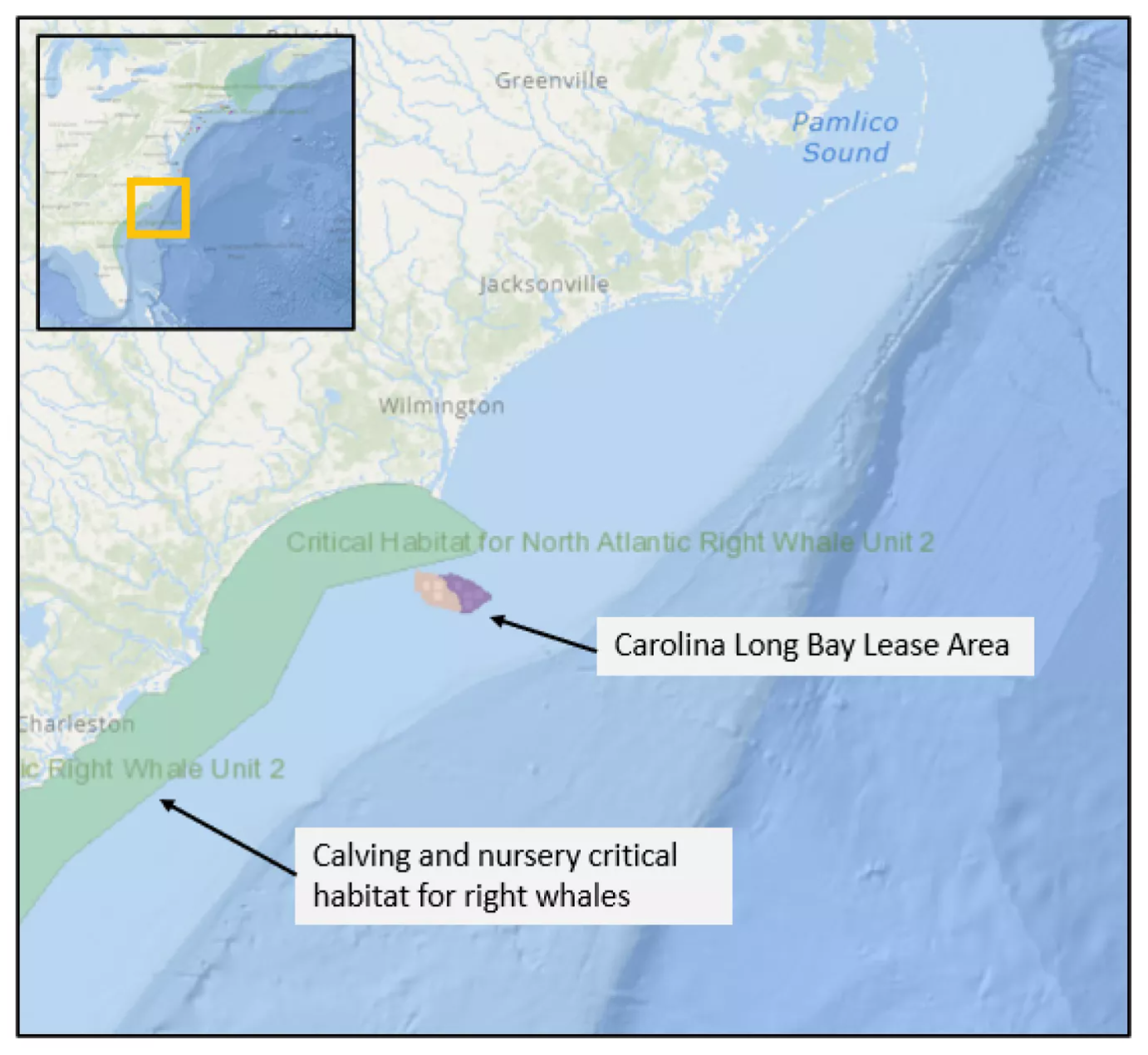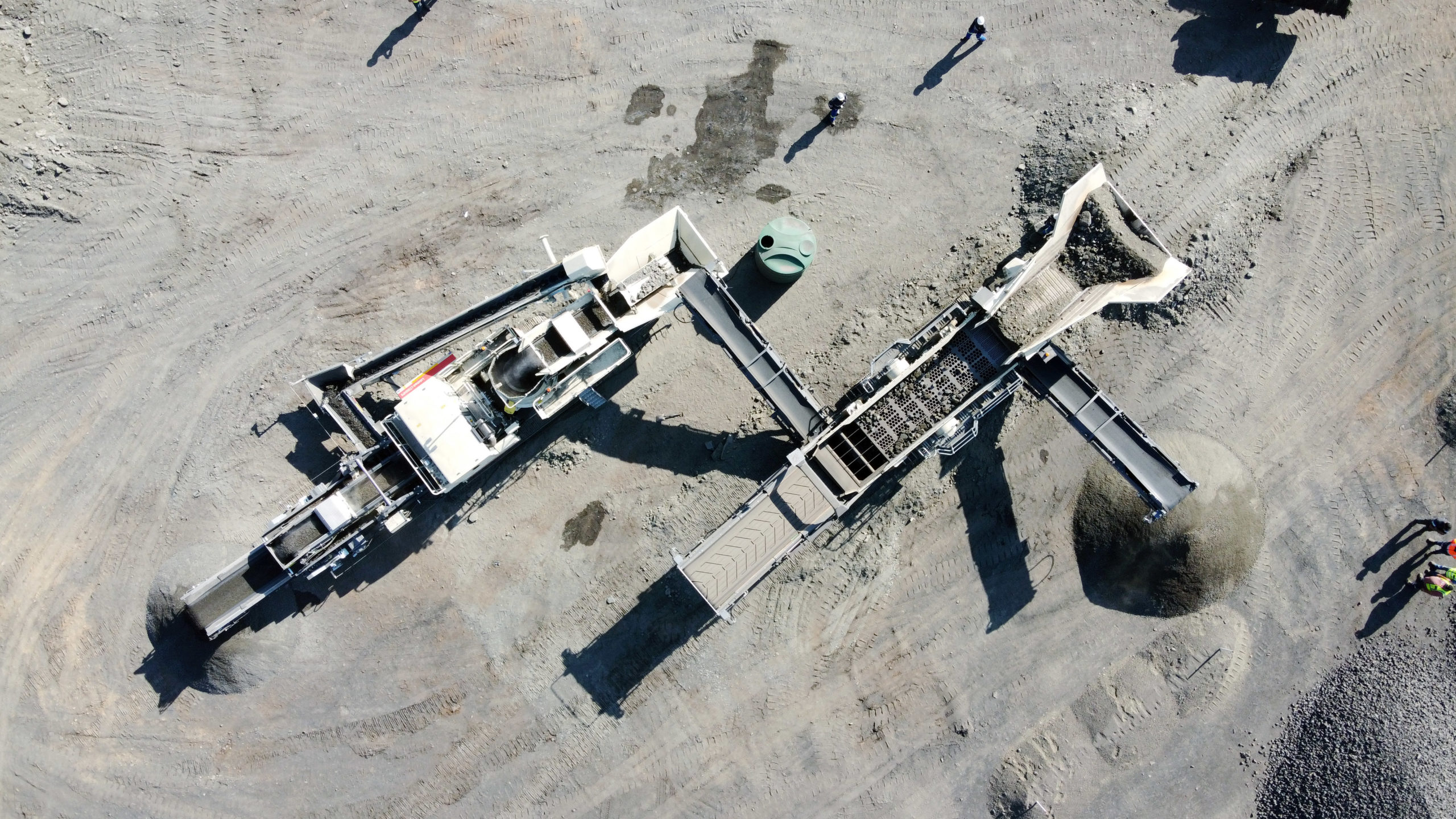
Initial survey work will soon begin to support offshore wind development in the Carolina Long Bay lease area, off North Carolina. Due to the close proximity of the lease area to calving habitat of the endangered North Atlantic right whale, NRDC is pleased to see that these offshore wind planning surveys will be undertaken with protective measures in place.

North Atlantic right whale Spindle and newborn calf. Credit: Clearwater Marine Aquarium Research Institute (NOAA permit #20556-01).
We need offshore wind, and the start of survey work in the Carolina Long Bay lease area is a cause for celebration. TotalEnergies and Duke Energy (“The Companies”), were awarded the leases to develop an offshore wind project in the Carolina Long Bay lease area in May 2022. The leases cover a 120 square nautical mile area that can provide enough clean energy to power more than 675,000 homes. The companies are collaborating on initial development activities and the projects are expected to come online in the 2030-2032 timeframe.
As we move forward with this and other exciting renewables development that can produce significant amounts of clean, renewable energy, it is important that projects are built and operated in a way that protects our ocean environment and wildlife.
One key species to protect from harm is the North Atlantic right whale. The North Atlantic right whale is in precarious straits. Fewer than 340 individuals remain, and of those, only about 70 are reproductive females—the lifeblood of the species. Right whales are rapidly declining due to vessel strikes and fishing gear entanglements and face a multitude of additional threats, including underwater noise pollution and malnourishment, all while fighting to adapt to climate change. With the species simply unable to withstand further loss or disturbance, the right whale crisis is not a problem caused by the offshore wind industry, but it is one the industry must face.
Protection of mothers and calves is especially crucial if the species is to survive. The waters off the U.S. Southeast region—spanning from Cape Fear, North Carolina, to just south of Cape Canaveral, Florida, has been designated as critical calving and nursery habitat for the species. Every year, from mid-November through mid-April, right whale mothers travel to these warm shallow waters to give birth, feed their babies, and help them learn how to swim so they are able to make the long journey north to feeding areas off of New England and Atlantic Canada by the summer. Still other members of the right whale population may be present in the waters of the mid-Atlantic year round.
But these slow swimming behaviors in shallow, near-surface waters mean that mothers and their calves are extremely vulnerable to vessel strikes and other disturbances. Since 2020, three calves and one of their mothers have been killed by vessel strikes, or are presumed to have died from their injuries. Mothers and calves also “whisper” to each other to avoid predators. Industrial noise can easily drown out these quiet calls, risking the calf becoming confused or lost.
While it is important that right whales are protected from offshore wind development throughout their range, extra special care must be taken when development is located close to calving habitat. During the offshore wind siting process, the Bureau of Ocean Energy Management (BOEM) reduced the lease areas in size to avoid overlap with the critical habitat area. The Companies have also recognized this need and committed to protect critically endangered North Atlantic right whales during these initial surveys by slowing these vessels down to 10 knots or less. Short of fully eliminating vessels from an area, slowing vessel speeds to 10 knots is the only scientifically proven way to significantly reduce the risk of a lethal strike.
The surveys are intended to support the placement of buoys that will collect data on wind speed and oceanic conditions to inform the subsequent development of the offshore wind projects. As part of this effort, The Companies plan to collect data to help improve our understanding of how right whales and other wildlife are using habitat areas so we can better protect them during future construction.
The efforts by The Companies to protect right whales while advancing these initial surveys shows that we do not need to choose between clean energy development and wildlife protection. We hope that the companies throughout the Southeast region continue to honor this important commitment.
By Dr. Francine Kershaw, Senior Scientist, Marine Mammals, Oceans Division, Nature Program. Republished from NRDC
I don’t like paywalls. You don’t like paywalls. Who likes paywalls? Here at CleanTechnica, we implemented a limited paywall for a while, but it always felt wrong — and it was always tough to decide what we should put behind there. In theory, your most exclusive and best content goes behind a paywall. But then fewer people read it! We just don’t like paywalls, and so we’ve decided to ditch ours. Unfortunately, the media business is still a tough, cut-throat business with tiny margins. It’s a never-ending Olympic challenge to stay above water or even perhaps — gasp — grow. So …




